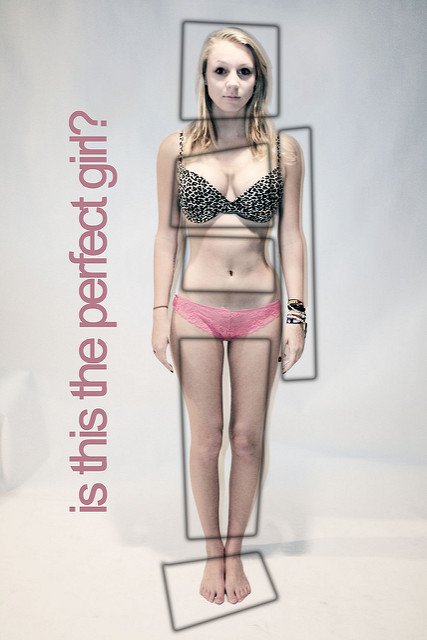“Body Dysmorphic Disorder” a new challenge in the digital era
Hello everyone, this is my second post and I had initially planned to write about my travels and stories about the places I visit but yesterday during a conversation with my friend this topic came up and we had an extensive discussion about it. I came back home and read more about it and thought people may like to know about this disorder.
In the digital era, a mental disorder which is taking a toll over the world is Body Dysmorphic Disorder, abbreviated as BDD. It is a distinct disorder, which makes one see physical flaws which no one else might notice. It appears in the form of a tendency which keeps you glued to the mirror, camera and wherever you can see yourself in order to fix or repair a flaw which exists, only in your mind. It makes you over-critical and fills you with disappointment for how you appear. And slowly these flaws in your appearance become so time-consuming, leading to a mental disorder termed as BDD. It makes the person extremely self-conscious and creates a fear of being clicked and eventually turning into a fear of rejection.
Facts about it, suggest that it’s a mental disorder which makes a person find imaginary flaws in his or her physical appearance. This disorder has also been called as “imagined ugliness”. People suffering from this illness often spend a lot of time covering up their flaws, camouflaging them with make-up, cosmetic and surgical procedures. Social awkwardness makes them insecure which is the result of the victim facing imaginary rejections in social gatherings and public places. Researchers have found out that teenagers are more prone to this kind of insecurity and social awkwardness. A person afflicted from BDD often finds himself in a situation where he or she gets obsessed with a body part and spends hours looking at it, finds ways to hide it; in worst case scenarios the person even considers going through cosmetic or plastic surgery.

Researchers haven’t found the causes of BDD yet, but its causes can be related to the environmental factors, neurobiological factors, personality traits and life experiences. People with BDD suffer from obsession which is hard to resist and keeps them focused on imperfections. Obsession creates social awkwardness and fear of facing the world, in some cases, it also triggers suicidal tendency in the victim. The dissatisfaction goes on increasing day-by-day and the victims do not realize the seriousness of the situation and often ignore it. Their productivity keeps on receding; they start believing that others notice them and mock for their appearance. Victims seek reassurance from outside but are held by the belief of being ugly, which eventually destroys their social life.
There are some who believe, that taking selfies in large number is the symptom of BDD, which is untrue. Taking selfies is not the indicator of mental illness. Selfies are taken and deleted, not posted till the time an appropriate one is clicked. This obsession occurs for areas such as facial features, skin, body weight and hair. Often victims also feel obsessed with their private parts. This obsession turns into self-hatred.

The good news about this disorder is that it can be treated. Its treatment involves both psychotherapy and medication. Psychotherapy is a behavioral or cognitive therapy in the form of counseling which aims and changing the behavior or the thinking of the victim. Antidepressant medication known by the name selective serotonin reuptake inhibitors (SRRI’S) and antipsychotic medicines like olanzapine, aripiprazole, or pimozide are showing promising results in treating this disorder. Family support therapy is another way of treating this disorder. This disorder cannot be prevented but teaching how to develop realistic attitudes towards the body can help in the long run.
People with BDD are more exposed to severe depression problems and suicidal tendencies. This situation can be avoided with early realization and right treatment. The person suffering from this disorder doesn’t need anything but a supportive environment and understanding family to cope with this illness.
Do comment and let me know your thoughts and experiences.
Hello everyone, this is my second post and I had initially planned to write about my travels and stories about the places I visit but yesterday during a conversation with my friend this topic came up and we had an extensive discussion about it. I came back home and read more about it and thought people may like to know about this disorder.
Hello @kshtj19
I like your post. Thats sample I took to show you that word motivate me
Thank you very much. Your kind words are very encouraging for me :)
You are welcome
Social media and the Sports Industry aren't making this any easier for anyone. On any magazine cover or on TV you will probably see the bodies of professional athletes or models which sets the bar extremely high for most.
Now, this isn't to say that some of these bodies aren't attainable.... But to be 10-20 years older than someone who has been training for a sport or lifting/conditioning for years longer than you, and to expect to transform your body to look like theirs is usually just unrealistic.
I say it's unrealistic because of the amount of time people think this kind of process might take them. What people want in a few weeks is usually at least six months of hard work. All-in-all I think educating people and promoting "body-acceptance" is the way to go. If people change their lifestyle to be healthy as their main goal, their body will start to reflect the differences.
I agree. And the kind of advertisements we have nowadays ..people are making this world more and more depressing